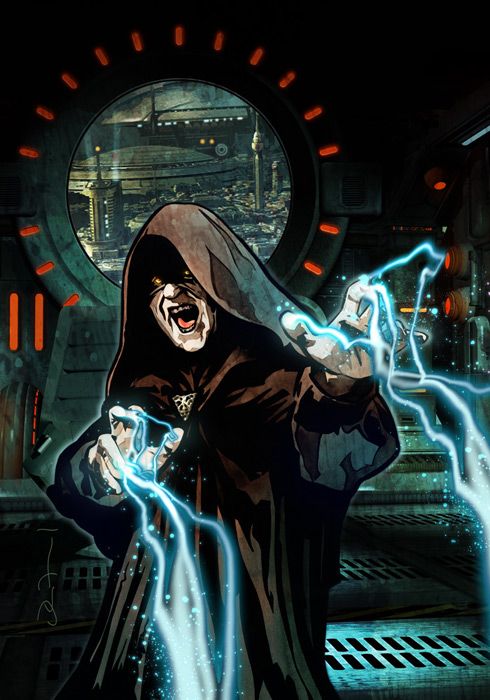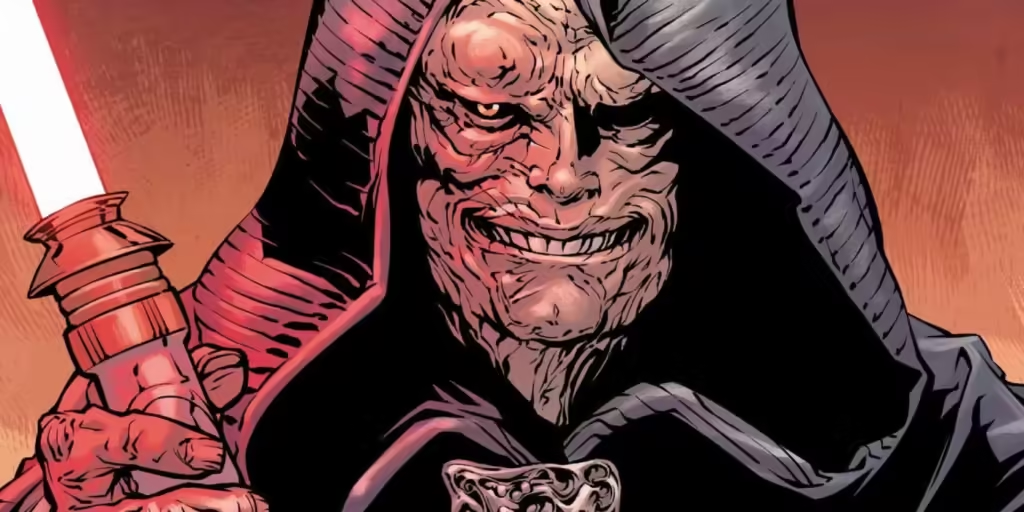Emperor Palpatine: The Malevolent Mastermind

Emperor Sheev Palpatine, also known as Darth Sidious, is a central figure in the Star Wars universe, renowned for his role as the primary antagonist in the original and prequel trilogies. His character has also been explored in-depth within the Star Wars comics, expanding on his rise to power, his machinations, and his influence on the galaxy.
Origin and Rise to Power
“Star Wars: Darth Plagueis” (2012): Although technically a novel, it provides essential backstory relevant to the comics. Sheev’s origin as a Sith apprentice to Darth Plagueis is explored, showing how he manipulated his way to becoming the Emperor.
“Star Wars: Episode I – The Phantom Menace” (1999): The comic adaptation of the film highlights Palpatine’s political maneuvering, orchestrating the Naboo Crisis to become Supreme Chancellor of the Galactic Republic.
The Clone Wars Era
“Star Wars: Darth Maul” (2000): This series delves into Sheev’s relationship with his first Sith apprentice, Darth Maul, and how he uses Maul to further his plans without revealing his true identity.
“Star Wars: Republic” (2002-2006): This series covers the Clone Wars, depicting Palpatine’s dual role as Chancellor and secret Sith Lord. It shows how he manipulates both the Republic and the Separatists to consolidate his power.

Galactic Empire
“Star Wars: Darth Vader” (2015-2016): This series focuses on the early days of the Empire, exploring Palpatine’s relationship with Darth Vader. It reveals how Palpatine tests Vader’s loyalty and ensures his apprentice’s total submission to the dark side.
“Star Wars: Empire” (2002-2006): Set shortly after the events of “A New Hope,” this series delves into the operations of the Empire, showcasing Palpatine’s iron grip on the galaxy and his ruthless measures to maintain control.
“Star Wars: Dark Empire” (1991-1992): This iconic series reveals that Palpatine has cheated death through cloning. Set after the fall of the Empire in “Return of the Jedi,” it depicts his attempts to reclaim power and corrupt Luke Skywalker to the dark side.

Manipulation and Deception: Palpatine is depicted as a master manipulator, orchestrating events from the shadows to achieve his goals. His ability to deceive the galaxy, hiding his Sith identity while gaining political power, is a recurring theme.
Sith Philosophy: The comics explore Sheev’s adherence to the Sith philosophy, particularly the Rule of Two. His relationships with his apprentices, from Darth Maul to Darth Vader, highlight the Sith cycle of betrayal and the quest for ultimate power.
Immortality and Cloning: The theme of Palpatine’s quest for immortality is prominent in the comics, particularly in “Dark Empire.” His use of cloning technology to extend his life and maintain his dark influence over the galaxy is a critical plot point.

Palpatine’s depiction in the comics significantly enriches the Star Wars lore, providing deeper insights into his character and the Sith. His strategic brilliance, mastery of the dark side, and unrelenting ambition make him one of the most formidable villains in the Star Wars universe. Through various comic series, readers gain a comprehensive understanding of how Palpatine’s actions shaped the galaxy, solidifying his legacy as the ultimate puppet master behind the rise and fall of the Galactic Empire.
Some facts about Palpatine

Originally Named Cos Da****: In George Lucas’s early drafts of “Star Wars,” Palpatine’s name was Cos Da****. The name was changed to Palpatine as the character evolved.
Dual Identities: Palpatine is the Sith Lord Darth Sidious, a fact he concealed while rising to power as a Senator and later Emperor. His dual identity is a core element of his character.
Unnatural Powers: Palpatine is known for his mastery of dark side abilities, including Force lightning, which he famously uses to incapacitate and kill his enemies.
Actor Ian McDiarmid: Ian McDiarmid portrayed Emperor in the original trilogy’s “Return of the Jedi” (1983) and reprised the role in the prequel trilogy and sequels, becoming synonymous with the character.
Political Manipulator: Palpatine’s political savvy is unmatched. He orchestrates the fall of the Galactic Republic and the rise of the Galactic Empire through meticulous manipulation and strategic alliances.
Dark Side Scholar: Palpatine is deeply knowledgeable about Sith history and the dark side of the Force, which he uses to his advantage in corrupting Anakin Skywalker and other apprentices.
Cloning Technology: In the “Dark Empire” comic series, Emperor returns from death using cloning technology, a concept revisited in “The Rise of Skywalker” (2019).
The Rule of Two: Sheev adheres to the Sith Rule of Two, always having one apprentice. Notable apprentices include Darth Maul, Count Dooku (Darth Tyranus), and Anakin Skywalker (Darth Vader).
Influence on the Jedi: Sheev orchestrated events that led to the Jedi Order’s fall, including the Clone Wars and Order 66, which wiped out most of the Jedi.
Secret Apprentice: In the “Star Wars: The Force Unleashed” video game series, Palpatine has a secret apprentice named Starkiller, used to hunt down remaining Jedi.
Senate Transformation: Emperor transforms the Galactic Senate into the Imperial Senate, centralizing power and eliminating dissent, further solidifying his control over the galaxy.
Deceptive Calm: Despite his sinister nature, Sheev often appears calm and composed, using his political demeanor to mask his true intentions and manipulate those around him.
Cultural Impact: Sheev character has had a lasting impact on popular culture, often cited as one of the greatest villains in cinematic history due to his cunning, ruthlessness, and iconic portrayal by McDiarmid.
Dark Side Prophecies: Sheev is heavily involved in the prophecy of the Chosen One, which predicts the one who will bring balance to the Force, though he seeks to manipulate it for his own gain.
Expanded Universe: In the Star Wars Expanded Universe (now “Legends”), Palpatine’s influence extends even further, with additional stories detailing his schemes and resurrection attempts beyond the original films.

More about the Emperor here.
You May Also Like
